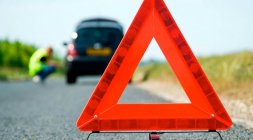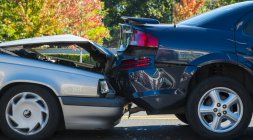Be cautious about these 10 crucial things before driving in the rain
Drivers should have basic knowledge of how to stay safe while driving under the rain because reduced visibility and slippery roads significantly affect your safety.
Driving is a difficult task to do. It requires practice to master driving skills. It becomes extra challenging when driving in the rain, whether it is a heavy downpour or a sprinkle. It is considered as one of the toughest driving situations that can be encountered by the driver.
During the rainy season, higher accident rates are reported. The same scenario happens in all parts of the world. No matter where you live, there will inevitably be instances that you'll need to drive in the rain.
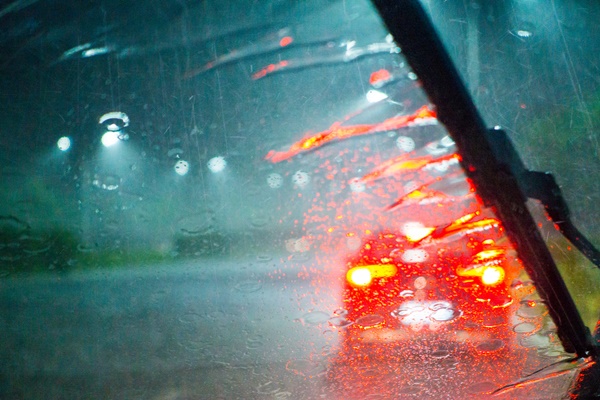
Driving becomes extra challenging when driving in the rain
Reduced visibility and slippery roads significantly affect your safety. That's why drivers should have basic knowledge of how to stay safe while driving under the rain.
Philcarnews.com values your safety, which is why we listed ten crucial things you need to know to drive safely under rainy conditions.
1. If not in a rush, wait for the weather to improve
If you're not in a hurry and you're uncomfortable driving under a heavy downpour, try postponing your trip for a bit. Wait until the weather's condition improve. Remember that your safety should be your top priority. Don't endanger your life, especially by driving in heavy conditions, especially if it's not really necessary.

Wait until the weather's condition improve
2. Spend extra time to double-check the car components
One of the most important things you need to make sure before heading to the wet road is the condition of your vehicle's components. Double-check them and ensure they're in good working condition.
You need to pay extra attention to this car equipment, windshield wipers, taillights, and headlights. They are the car components that let you see and be seen – which is an essential aspect while driving, most importantly, under severe weather conditions.
Don’t forget to check the tires of your car. Note that the condition of your tires significantly affects the traction on wet surfaces. Bald tires will severely reduce traction.
>>> Related: 4 Car Parts to Check After Flood
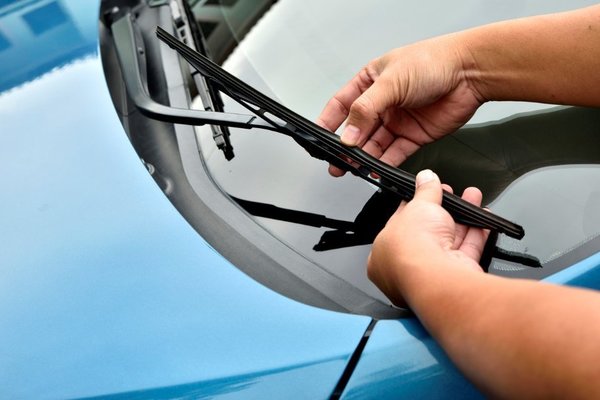
You need to pay extra attention to the car's windshield wipers
3. Drive slowly
On regular days, the normal driving speed should adhere to the posted speed limit. However, during the rainy season, you need to take extra precautions and drive more slowly than usual.
Keep in mind that wet roads are slippery and dangerous. When it's raining, the car's reaction time is slower. Reducing speed is a must during rainy weather.
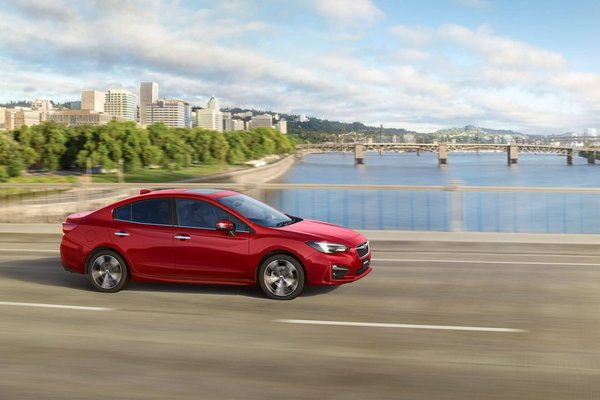
During the rainy season, you need to take extra precautions and drive more slowly than usual
4. Headlights on
Aside from the slippery roads, visibility is another major issue when driving under the rain. Your headlights will not only allow you to see the road ahead.
It will also enable other drivers and road users to see you. Even if it's only misting, illuminated headlights will help increase road visibility for you and other road users.
>>> Related: What you need to do if your headlights stop working
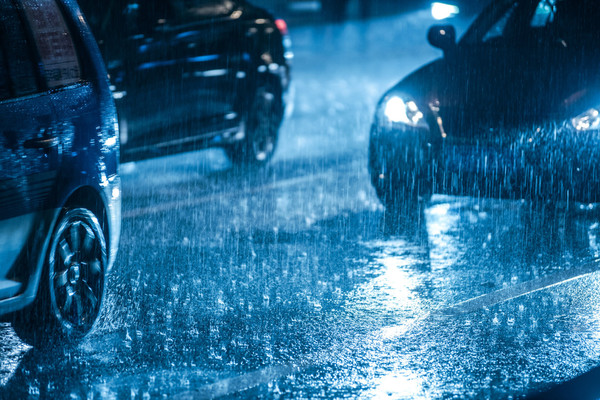
Illuminated headlights will help increase road visibility for you and other road users
5. Utilize the windshield wipers
Windshield wipers are there for a reason. This car component is responsible for making a more unobstructed view of the road ahead. When driving in the rain, make sure you utilize your vehicle’s windshield wiper.
Although it may seem basic knowledge for most of us, there are still a few who forget to use their windshield wipers when it's drizzling.
Usually, the speed of the windshield wiper can be adjusted to clear off moisture from your windshield in a heavy downpour or light mist. Several products are also available that can be wiped or sprayed onto the glass to defer the collected rainwater.
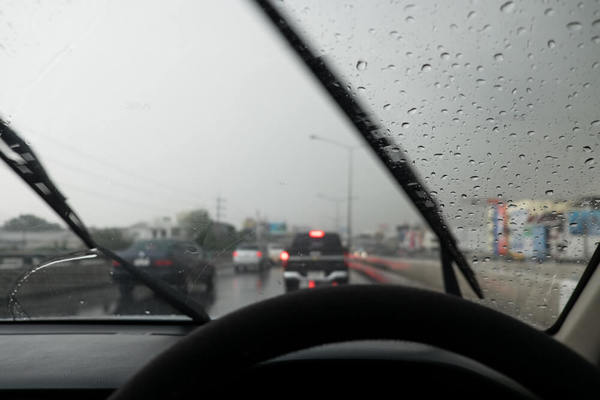
Windshield wipers are responsible for making a more unobstructed view of the road ahead
6. Observe a safe distance from the car ahead of you
It's better to maintain a greater distance between your vehicle and the car ahead of you. It will be more challenging to stop your vehicle when driving on wet conditions. Always provide a safe distance between you and other vehicles.
7. Don’t press the brakes heavily
As we’ve mentioned earlier, wet roads are unsafe because it's slippery. Heavy braking will only make it more dangerous. If you want to slow down your car, try to take your foot off the accelerator earlier than usual so that you can prepare to stop or slow down.
If your vehicle has cruise control, don't use it, so your attention will solely focus on using the brake and the gas.
>>> Related: 10 steps to master and take as soon as the car brake fails
8. Keep an eye for standing water
Be careful when driving on wet roads, especially if there’s standing water. As much as possible, avoid driving through standing water as it causes hydroplaning. It is when the vehicle loses traction and skid across the road’s surface.
You can prevent it by simply driving around places where there are collected water by safely steering away or changing lanes.
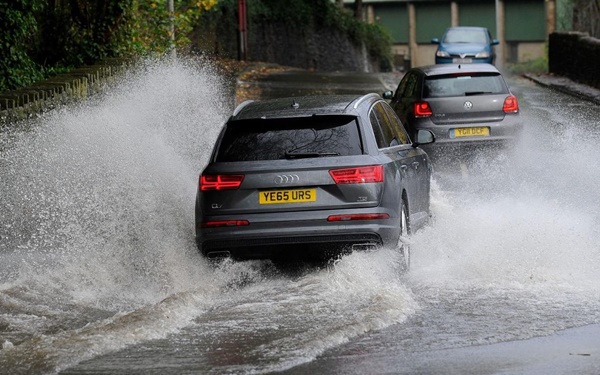
Be careful when driving on wet roads, especially if there’s standing water
9. Release the gas when hydroplaning
When drivers lose control when driving in slippery roads, it is called hydroplaning. It’s one of the common causes of vehicular accidents during the rainy season.
To lessen the impact of hydroplaning, you can slowly take off your foot from the accelerator then steer the car towards the direction you need to go. Do not slam the brakes or make sudden turns.
>>> Related: How to Lower the Risk of Hydroplaning?
10. Ventilate your vehicle
The level of humidity increases when it rains. This may cause fog to build up in the windows of your car. Most of the time, the ventilation system of vehicles has a function that works to minimize the fog that develops on the window and windshield's interior.
If it’s really needed to stop the car and pull over to the side if you no longer see anything through your windows.
It’s crucial to stay safe while driving, most notably when it's raining. Decreased visibility, slippery roads, and reduced traction can have a great impact on the way you drive. Keep in mind that the most important thing you need when driving in the rain is to reduce your speed and turn on your lights.
The ten things we listed below will help you have a safer drive or commute during the rainy season. Always keep them in mind and share this valuable information with your friends and families.
RECENT ARTICLES

